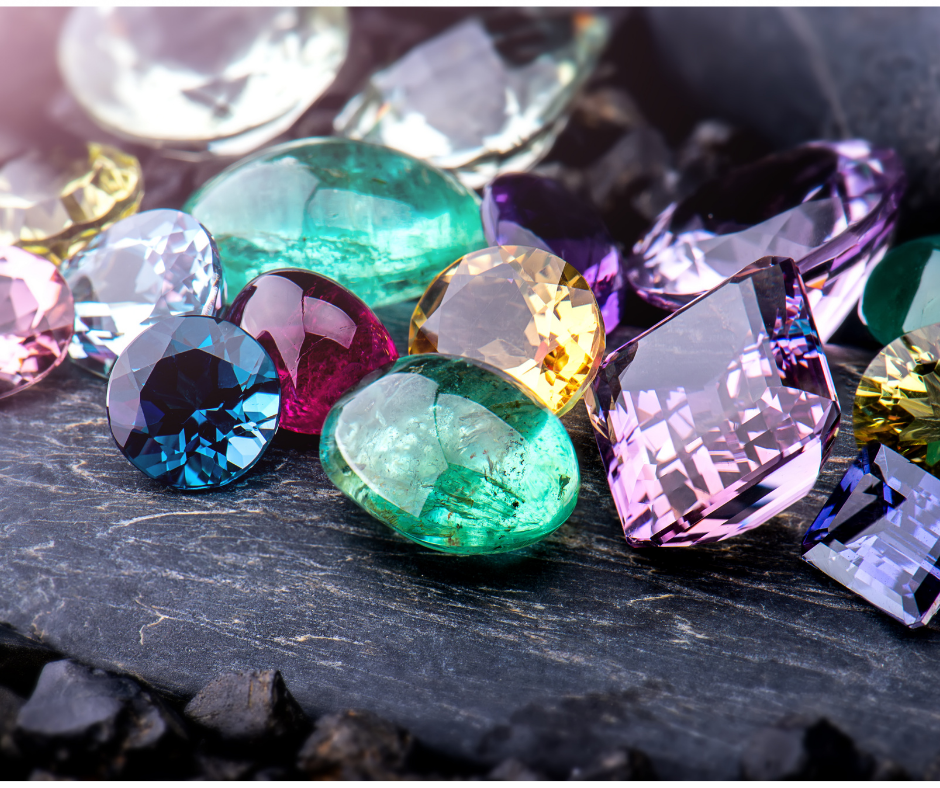Shopping Cart (0)
Your cart is currently empty.

Curious to know what your birthstone is? What does it symbolize? Worry not! Below is the list of birthstones and what do they mean in ancient and modern times.
January – Garnet
Garnet has a long history of being connected with the clergy and nobles. Pharaohs used red garnet necklaces in ancient Egypt. Rome used carved garnet rings to stamp wax on important papers. Garnets are also linked to Ancient Greece, as the goddess Persephone is said to have eaten pomegranates in the underworld, which are said to be the source of gorgeous deep red garnets. Garnets are also one of the oldest stones for psychic protection that have been used throughout history. Passion and sensuality are also said to be aided by gleaming crimson garnets.
The ancient Greeks identified amethyst with the wine deity Dionysus and believed that the gem could prevent intoxication because of its color. In ancient Greek, the word amethystos meant "not inebriated." Amethyst is also supposed to maintain the user sharp-witted and clear-headed. Amethysts, according to famous artist and inventor Leonardo da Vinci, improve intelligence and defend against evil thoughts. Amethyst has long been thought to aid meditation by Buddhists, and it is frequently used in Tibetan prayer beads. Amethyst has been connected with calm, equilibrium, and courage in various cultures, as well as the capacity to heal sleeplessness and relieve pain.
Aquamarine is thought to bring courage, mental clarity, and good health to the wearer. Aquamarine has been reported to keep sailors safe at sea, purify water, and function as an antidote to poison. The stone is also linked to siren and mermaid mythology, with some traditions claiming that aquamarines initially washed up on beach from sirens' treasure chests.
"Diamond is the most valuable, not only of precious stones, but of all things in this world," the Roman naturalist Pliny is reported as saying in the first century AD. Diamonds were thought to represent gods' tears or splinters from falling stars by the ancient Romans and Greeks, and Cupid's arrows were tipped with diamonds by the Romans (perhaps the earliest association between diamonds and romantic love). Diamonds were supposed to have therapeutic properties throughout the Middle Ages, and were thought to be able to cure everything from weariness to mental sickness. Diamonds were placed in the eyes of religious statues by the ancient Hindus, who believed that a diamond could protect its wearer from harm. Furthermore, many ancient cultures believed that diamonds provided strength and courage to those who wore them.
Emeralds are the stone of foresight and intuition. Legend has it that putting an emerald under your tongue gives you the capacity to foretell the future (which we do not encourage! ), as well as protecting you from bad spells and curing disease. Throughout history, emeralds have been regarded as emblems of truth and love. Emeralds were once associated with the goddess Venus, who was the goddess of love and hope in ancient Greece and Rome.
Pearls, the world's oldest precious stone, are noted for their lovely sparkling hue and delicate elegance. Pearls were thought to guard against fire in ancient China, and they were connected with chastity and purity in Europe. Even now, pearls are associated with innocence.
The ancient Hindus thought that people who donated rubies to the god Krishna would one day be monarchs. Rubies were also regarded to bring protection and serenity to people in India and Burma, and they were thought to bring health, prosperity, wisdom, and love success to medieval Europeans.
Peridots have been linked to Ancient Egypt for a long time. Peridot was supposed to protect against nightmares and to bring the wearer confidence, good luck, and health by the Egyptians. In fact, some of Cleopatra's famous emeralds are thought to have been peridots.
Blue has traditionally been associated with faithfulness, and sapphires were formerly the most popular jewel for engagement rings (before diamonds claimed that honor in the early 20th century). Sapphires are also linked to monarchy, as they were once one of the most popular stones used in royal jewelry. Sapphires are thought to bring prosperity and blessings, as well as spiritual clarity, good health, and the protection of innocence.
Opals have long been regarded to have supernatural powers due to their ability to display a wide range of colors inside a single stone. This diamond was thought to represent love and hope in roman Times. Opals, according to the ancient Greeks, gave their owners the ability of prophecy and protected them from disease. For generations, Europeans have regarded the gem as a symbol of hope, purity, and truth. It was once believed to have the ability to prolong the life and color of blond hair.
According to the Old Farmer's Almanac, topaz signifies love and fidelity and is thought to give power and wisdom to the person who wears it. Although topaz comes in a variety of colors, many civilizations and ages have associated orange topaz with fire. Topaz, like other precious stones, is said to bring luck and confidence.
People have ascribed unique abilities to turquoise from ancient times. Native American tribes in the Southwest utilized turquoise as an amulet for protection, and others think that wearing turquoise helps ward off the "evil eye" in ancient Persia (and modern-day Iran).
It is a long established fact that a reader will be distracted

You have no items in wishlist.
We will send you an email to reset your password.
| Title |
|---|
| Price |
| Add to cart |
| Type |
| Vendor |
